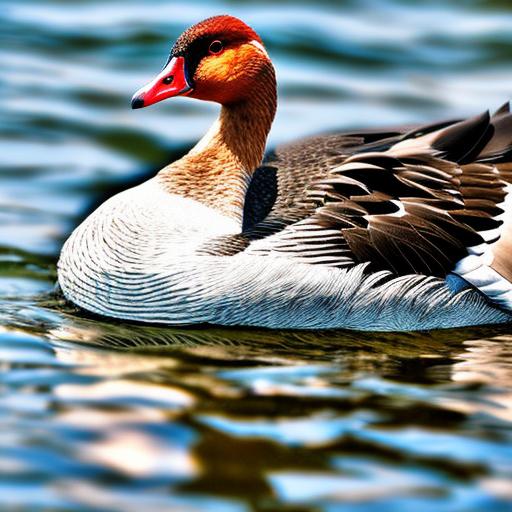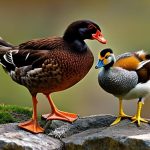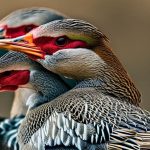Geese infestation is a common problem in many areas, causing damage to property and posing health risks. These birds are attracted to certain areas due to the availability of food and water sources. In order to effectively deal with a geese infestation, it is important to understand their behavior and implement appropriate solutions. This post will discuss various methods that can be used to deter geese, including creating physical barriers, implementing scare tactics, installing motion-activated devices, using visual deterrents, removing food sources, encouraging natural predators, maintaining a clean environment, consistent monitoring and maintenance, and seeking professional help.
Key Takeaways
- Geese are social animals and tend to return to the same location year after year.
- Physical barriers such as fences and netting can prevent geese from accessing certain areas.
- Scare tactics such as loud noises and predator decoys can deter geese from settling in an area.
- Motion-activated devices such as sprinklers and lights can startle geese and discourage them from staying.
- Visual deterrents such as reflective tape and balloons can create an unappealing environment for geese.
Understanding the Behavior of Geese
Geese are attracted to certain areas for several reasons. They are social animals and tend to gather in places where they can find food and water sources. They are also attracted to areas with open spaces, such as parks and golf courses, where they can easily spot potential predators. Geese are known for their nesting habits and tend to return to the same nesting sites year after year. They also have a strong homing instinct and will return to familiar areas even if they have been scared away.
To avoid attracting geese, it is important to minimize the availability of food and water sources. This can be done by keeping garbage cans tightly sealed and removing any spilled food or water from outdoor areas. It is also important to avoid feeding geese intentionally, as this can encourage them to stay in an area. Additionally, it is helpful to limit open spaces by planting dense vegetation or installing fences around potential nesting sites.
Creating Physical Barriers
Creating physical barriers is an effective way to keep geese away from certain areas. There are several types of barriers that can be used, including fences, netting, and floating barriers. Fences can be installed around ponds or other water sources to prevent geese from accessing them. Netting can be used to cover plants or crops to prevent geese from feeding on them. Floating barriers can be placed in bodies of water to create a physical barrier that prevents geese from landing.
One example of an effective physical barrier is a goose fence. This type of fence is specifically designed to deter geese and prevent them from entering an area. It is made of a material that is difficult for geese to walk on, such as wire mesh or plastic netting. The fence should be at least three feet high to prevent geese from flying over it. Additionally, it is important to make sure that the fence is securely anchored to the ground to prevent geese from crawling under it.
Implementing Scare Tactics
Scare tactics can be used to frighten geese and discourage them from staying in an area. There are several scare tactics that can be effective, including noise makers, visual deterrents, and predator decoys. Noise makers, such as air horns or propane cannons, can be used to startle geese and make them feel threatened. Visual deterrents, such as scarecrows or reflective tape, can be used to create the illusion of a predator presence. Predator decoys, such as plastic owls or coyotes, can also be effective in scaring geese away.
One example of an effective scare tactic is the use of a motion-activated sprinkler system. This system uses a motion sensor to detect the presence of geese and automatically activates sprinklers that spray water in their direction. The sudden burst of water startles the geese and makes them feel threatened, causing them to fly away. This method is effective because it combines both noise and visual deterrents.
Installing Motion-Activated Devices
Motion-activated devices can be used to deter geese by creating a sudden movement or noise when they approach a certain area. These devices are triggered by motion and can be effective in scaring geese away. There are several types of motion-activated devices that can be used, including sprinklers, lights, and sound emitters.
One example of an effective motion-activated device is a laser bird repellent. This device uses a laser beam to create a moving dot of light that scares geese away. The laser beam is projected onto the ground or water surface, creating the illusion of a predator presence. When the geese see the moving dot of light, they perceive it as a threat and fly away. This method is effective because it combines both visual and motion deterrents.
Using Visual Deterrents

Visual deterrents can be used to keep geese away by creating the illusion of a predator presence. There are several types of visual deterrents that can be effective, including scarecrows, reflective tape, and predator decoys. Scarecrows can be placed in areas where geese are likely to gather, such as near water sources or feeding areas. Reflective tape can be hung from trees or fences to create flashes of light that scare geese away. Predator decoys, such as plastic owls or coyotes, can also be effective in deterring geese.
One example of an effective visual deterrent is a goose repellent balloon. This balloon is designed to resemble the eyes of a predator and is inflated with helium to float above the ground. When geese see the balloon, they perceive it as a threat and fly away. This method is effective because it creates the illusion of a predator presence without causing harm to the geese.
Removing Food Sources
Removing food sources is an important step in discouraging geese from staying in an area. Geese are attracted to areas where they can find food easily, so it is important to minimize their access to food sources. This can be done by keeping garbage cans tightly sealed and removing any spilled food or water from outdoor areas. It is also important to avoid feeding geese intentionally, as this can encourage them to stay in an area.
In addition to removing food sources, it is also important to make the area less attractive to geese by limiting open spaces and planting dense vegetation. Geese prefer open spaces where they can easily spot potential predators, so planting dense vegetation can make an area less appealing to them. Additionally, installing fences or netting around potential nesting sites can prevent geese from accessing them.
Encouraging Natural Predators
Encouraging natural predators is another effective way to keep geese away from an area. Geese have natural predators, such as foxes, coyotes, and dogs, that can help control their population. By encouraging the presence of these predators, geese are less likely to stay in an area. This can be done by providing suitable habitat for predators, such as dense vegetation or nesting boxes.
One example of a natural predator that can be used to deter geese is a border collie. Border collies are highly intelligent and trainable dogs that have been used for centuries to herd livestock. They can also be trained to chase away geese and prevent them from nesting or feeding in a certain area. Border collies are effective because they use their natural herding instincts to control the movement of the geese without causing harm to them.
Maintaining a Clean Environment
Maintaining a clean environment is important in discouraging geese from staying in an area. Geese are attracted to areas where they can find food and water easily, so it is important to minimize their access to these resources. This can be done by keeping garbage cans tightly sealed and removing any spilled food or water from outdoor areas. It is also important to avoid feeding geese intentionally, as this can encourage them to stay in an area.
In addition to removing food sources, it is also important to keep the area clean and free of debris. Geese are attracted to areas where they can find nesting materials, so it is important to remove any debris or vegetation that could be used for nesting. It is also important to regularly clean up any droppings or feathers left behind by geese, as these can attract more geese to the area.
Consistent Monitoring and Maintenance
Consistent monitoring and maintenance are important in ensuring that geese do not return to an area. Geese have a strong homing instinct and will return to familiar areas even if they have been scared away. Therefore, it is important to regularly monitor the area for any signs of geese and take appropriate action to deter them.
Regular maintenance is also important in keeping the area clean and free of debris. This includes removing any fallen leaves or branches that could provide nesting materials for geese. It is also important to regularly clean up any droppings or feathers left behind by geese, as these can attract more geese to the area.
Seeking Professional Help
If all else fails, seeking professional help may be necessary to deal with a geese infestation. Professional wildlife control experts have the knowledge and experience to effectively deter geese and prevent them from returning. They can assess the situation and recommend appropriate solutions based on the specific needs of the area.
When seeking professional help, it is important to find a reputable company or individual who specializes in wildlife control. They should have the necessary licenses and certifications to handle geese infestations safely and effectively. It is also helpful to ask for references or read reviews from previous clients to ensure that they have a track record of success.
Dealing with a geese infestation can be challenging, but with the right methods and strategies, it is possible to deter these birds and prevent them from causing damage or posing health risks. By understanding their behavior and implementing appropriate solutions, such as creating physical barriers, implementing scare tactics, installing motion-activated devices, using visual deterrents, removing food sources, encouraging natural predators, maintaining a clean environment, consistent monitoring and maintenance, and seeking professional help, it is possible to effectively deal with a geese infestation. It is important for individuals and communities to take action to address this issue and create a safe and healthy environment for all.
If you’re looking for effective ways to keep geese off your shoreline, you might also be interested in learning about the best practices for setting up a chicken coop. Poultry Wizard offers a helpful article on “Where to Put Your Chicken Coop” that provides valuable insights on creating a secure and comfortable environment for your chickens. By implementing the right strategies, such as proper placement and predator-proofing techniques, you can ensure the safety of your chickens and deter unwanted visitors like geese. Check out the article here to discover more about keeping your poultry safe and secure.
FAQs
What are some effective ways to keep geese off of shorelines?
There are several effective ways to keep geese off of shorelines, including using decoys, installing fencing or netting, using noise deterrents, and planting vegetation that geese do not like.
Why is it important to keep geese off of shorelines?
Geese can cause damage to shorelines by trampling vegetation, leaving droppings, and disturbing the natural ecosystem. They can also pose a health risk to humans due to their droppings.
What are some natural deterrents for geese?
Some natural deterrents for geese include planting vegetation that geese do not like, such as tall grasses or shrubs, and using natural predators such as dogs or hawks.
Are there any humane ways to keep geese off of shorelines?
Yes, there are several humane ways to keep geese off of shorelines, including using noise deterrents, such as air horns or whistles, and using motion-activated sprinklers.
What should I do if I encounter an aggressive goose?
If you encounter an aggressive goose, it is important to remain calm and avoid making direct eye contact. Slowly back away from the goose and give it plenty of space. Do not attempt to feed or touch the goose.
Meet Walter, the feathered-friend fanatic of Florida! Nestled in the sunshine state, Walter struts through life with his feathered companions, clucking his way to happiness. With a coop that’s fancier than a five-star hotel, he’s the Don Juan of the chicken world. When he’s not teaching his hens to do the cha-cha, you’ll find him in a heated debate with his prized rooster, Sir Clucks-a-Lot. Walter’s poultry passion is no yolk; he’s the sunny-side-up guy you never knew you needed in your flock of friends!







